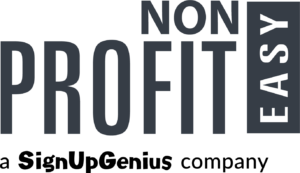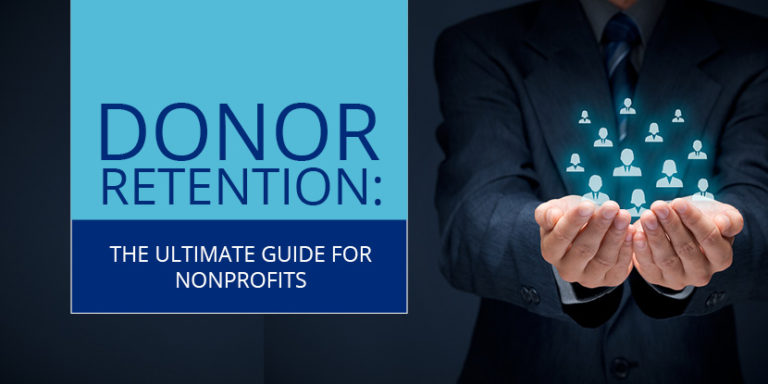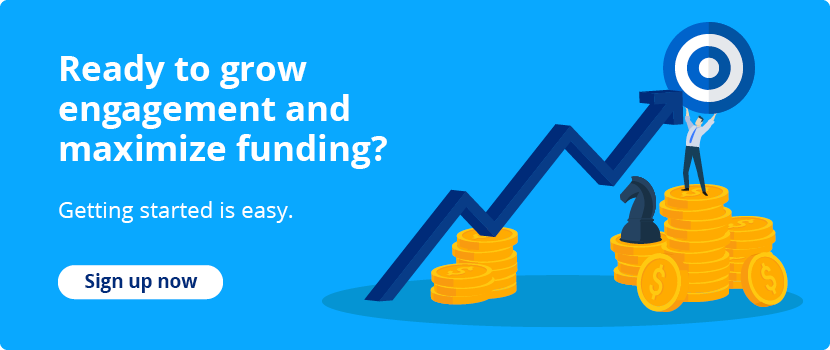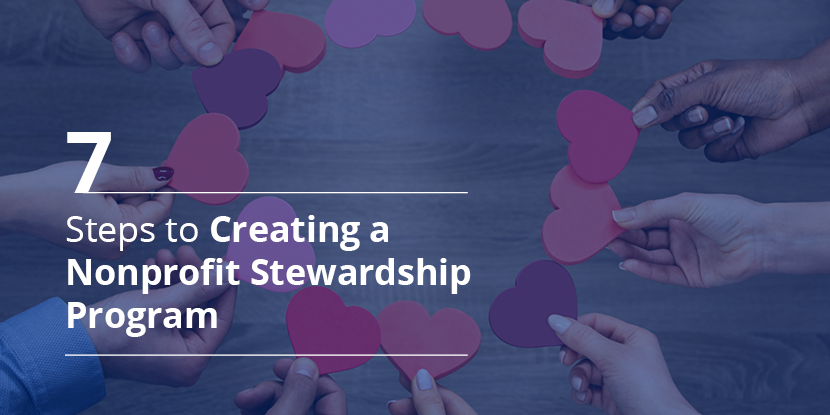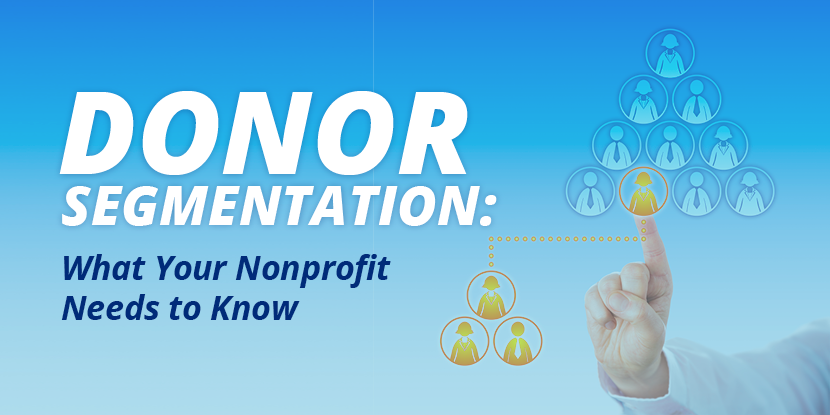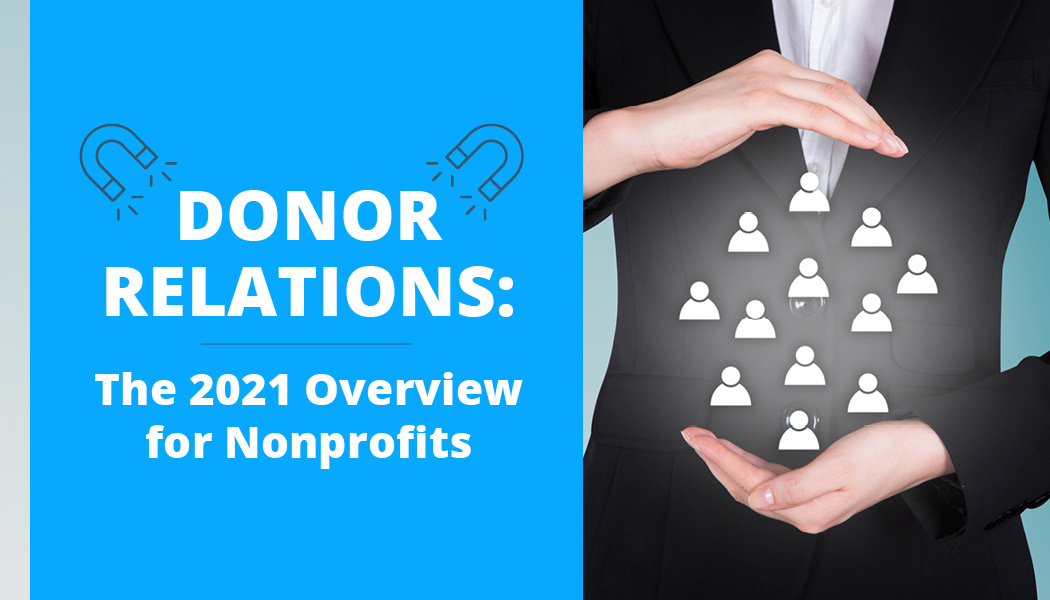Your nonprofit’s donors are more than the donations they give. They’re volunteers and advocates for your cause. Without them, you couldn’t do the work you do. In this guide, we’ll focus on how you can earn their continued trust and support. We’ll answer the following questions:
- What Is Donor Retention?
- Why Is Donor Retention Important for Nonprofits?
- How Do You Increase Donor Retention? 5 Best Practices
Despite its formal-sounding name, donor retention, however, isn’t about selling a product. You’re not offering donors a chance to buy a piece of the pie that is fighting for your cause.
With donor retention, you’re not exactly offering donors a chance to buy a piece of the pie that is fighting for your cause. You are, however, selling the experience of being a donor. Gifts make donors a part of something special: a community, a mission, a pursuit that thrives on human compassion! If you’re ready to learn all about donor retention, let’s dive in.

What Is Donor Retention?
Donor retention is the rate at which donors maintain their relationship with your organization and continue to donate over time. Regular, monthly, and annual donors are all forms of retained donors, as they give multiple gifts to nonprofits over long periods of time. In your overall stewardship plan, donor retention is a crucial fundraising strategy.
Consider that 3 out of 4 new donors leave and never return, and that the average donor retention rate hovers somewhere between 20-30%. Even if that number is closer to 30%, you’re losing far more donors than you’re retaining. But a solid donor retention rate of 40% would keep you in the black.
The goal is to get donors to give again and again and again, and to never lose their connection to your organization.
Imagine you’re fundraising for a museum that raised $500,000 in last year’s campaign and has set a goal of $600,000 for the current one. If they’ve retained all of their donors from the previous year, the museum could rely on existing relationships to meet its goal and would only have to raise $100,000 from new donors.
However, if donors from last year are lost, then the museum would have to raise more in new contributions. Doing so would require more effort, time, and money to be put towards new donor acquisition.
Ultimately, donor retention allows nonprofits to have reliable revenue from year to year. As a result, they can devise reasonable fundraising budgets and have a good idea of the money that they’ll have to pursue their mission.

Why Is Donor Retention Important For Nonprofits?
Every nonprofit will experience some level of donor attrition, but only seeking new donors in order to combat your losses is not an effective approach. How, then, can donor retention help? Donor retention can:
- Reduce donor acquisition costs. Not only does retention take less time than acquisition, it also costs significantly less money. It costs about five times more to acquire one new donor than it does to retain a donor, and nonprofits tend to spend two to three times more recruiting donors than those donors will give through their first, and possibly only, donation.
- Encourage larger donations. New donors are new money, but most donors don’t make their biggest donations the first time they give. Donor retention isn’t just about receiving the same $25 donation month after month. It’s about building relationships that donors care about, so that, eventually, they choose to give more in a big way. Major gifts and planned donations are the result of building relationships over long periods of time.
- Create stronger donor relationships. Donors are people who choose to invest in your organization, and, while their investments might come in monetary form, they deliver much more than that. Donors might also volunteer for your nonprofit, serve on your board, tell friends about your cause, and engage in other activities that give your nonprofit more benefits than a mere check ever could. Donor retention is a commitment to fostering relationships that will last and that are desirable to all the parties involved.
- Improve your reputation. Marketing requires a lot of money and possibly even more effort. Wouldn’t it be nice if there was a way to spread the word without having to coordinate so many resources? When donors give and keep on giving to your nonprofit, they likely have an affinity for your organization. It’s probable that they’ll mention your nonprofit to friends and family, and maybe even encourage people to volunteer or donate to your cause.
With retention rates plummeting, it’s important for nonprofits to bring them back up. Money aside, nonprofit activities get perceptibly easier when you have reliable donors who you can count on for support in a plethora of ways.

How Do You Increase Donor Retention? 5 Best Practices
Just a 10% increase in donor retention can raise the lifetime value of a nonprofit’s donor database by 200%. Small improvements can lead to big gains, and there are many different ways in which you can boost your donor retention. Below, we’ll look at five of the most important steps.
1. Evaluate your current donor retention.
Before you can dive into enacting your donor retention program, you’ll want an accurate understanding of your current ability to retain donors. In other words, you’ll want to look at how “leaky” your bucket is.
In fundraising, the “leaky bucket” analogy is based on a simple principle: If you take a bucket with holes in it and fill it with water, the bucket is going to leak. Essentially, if you have holes in your donor engagement strategy, you’re going to see donors slip through your fundraising bucket over time.
So, before you make your donor retention plan, you’ll want to assess just how leaky your fundraising bucket is, understand where you have gaps in your strategy, and target those holes in your plan.
2. Make a detailed plan.
It’s hard to retain donors without a defined strategy in place. Fundraisers need to be consistent in terms of timing, the types of communications they’re sending, and their methods of communication with donors.
Donor retention plans should outline a defined, consistent strategy that answers the following questions:
- What happens when someone donates?
- What materials are being sent to donors and when?
- What information are you trying to learn from donors?
Having a detailed plan ensures everyone is on the same page while streamlining the retention process. Planning will help put a process behind typical or ad hoc activities, saving your staff time and energy.
3. Implement prompt outreach.
Not only can better communications drastically boost retention rates, but nonprofits need to be timely about reaching out to donors once donations are made. Nonprofits have about 90 days after a donation is made to form a relationship. After 90 days, the chances of retention plummet.
Thus, you should take steps to immediately follow-up with donors to show them your appreciation. As part of your donor retention outreach, you should:
- Set up an automatic thank-you message to go out after every donation.
- Create a first-time donation-triggered email drip campaign.
- Implement a multi-touchpoint strategy for reaching out to first-time donors.
- Establish donor segments in your CRM according to their preferred communication channels and the information that they want to receive about your organization.
No one likes a generic email, and donors can tell when you’re sending them the same message that everyone else is receiving. Instead, use merge tags to personalize all of your outreach with the names, pronouns, titles of your donors. As you send these messages, make sure to also share other resources, such as volunteer opportunities and upcoming events, instead of just asking for more money right away.
4. Communicate frequently and effectively.
Donor retention requires both a deep level of appreciation for and a meaningful connection to your donors. Thus, treat your donors like actual human beings, as opposed to incredibly intelligent ATM machines. Communications with donors should not all include donation requests.
Include communications that focus on teaching donors about your organization, informing them of upcoming events and volunteer opportunities, and sharing other information that’s geared toward building a relationship.
Non-ask communications help to build the kinds of relationships you need in order to retain donors. When you’re reaching out to people to volunteer or to talk about your organization in a capacity that doesn’t pertain to donations, you’re letting people know that you care about more than just their money.
For example, a botanical garden fundraising campaign could send out information about an upcoming dinner hosted at the grounds, and then follow-up with donors who attended about giving a new gift.
Perform these non-ask communications in the same medium as you’ll eventually request donations, so that every time a donor receives an email or phone call, they won’t assume that all you’re after is money.
That being said, you should use a variety of communication methods to reach donors. While donors might prefer a certain form of communication, you want them to have multiple touchpoints with your organization. You might use a combination of:
- Direct mail
- Social media
- Phone calls
- Text messages
- Digital ads
For an effective, multichannel communication strategy, you’ll need access to a dedicated donor management platform that can manage the major aspects of your marketing and outreach efforts. When you reach out to donors in multiple ways you stand to become more than mere emails in an inbox or just another volunteer opportunity. You can become a valued relationship.
5. Measure success and re-strategize.
Fundraising is a nonstop process, and it’s important to always be tweaking and improving your efforts. For best results, treat these steps as a cyclical process rather than a linear one. Regularly collect, measure, and evaluate data on how your donor retention strategy is doing. Consider looking at the following metrics on both organization-wide and individual donor levels as part of your analysis:
- Email open rates
- Email click rates
- Event attendance
- Volunteer involvement
- Repeat donation rate
- Donation totals
- Surveys responses
Fundraising boils down to landing donations from two sources: new donors and existing donors. Of course, you need to focus on both donor acquisition and retention. But retention plays a crucial role in any fundraising strategy.
Donors tend to increase their gifts over time, and loyal donors can do a lot of good that goes beyond their much-needed monetary contributions. Donors are your friends, and if you treat them well, they’ll treat you well in return, and for a long time to come.
Additional Resources
For more donor retention-related information, check out NonProfitEasy’s additional fundraising resources:
- Donor Database Buyer’s Guide: How to Choose Your Software. A strong donor data strategy requires a strong donor management system. Check out this buyer’s guide to review your software options.
- Volunteer Retention: 10 Ways to Keep and Engage Supporters. If you’re retaining your donors but not your volunteers, you’re only addressing half of the equation. Use this guide to employ a two-pronged approach to retain both donors and volunteers.
- Donor Segmentation: What Your Nonprofit Needs to Know. In order to retain your donors, you need to know who they are. In this article, you’ll learn about how to use data segmentation to tailor your outreach according to specific donor characteristics.
